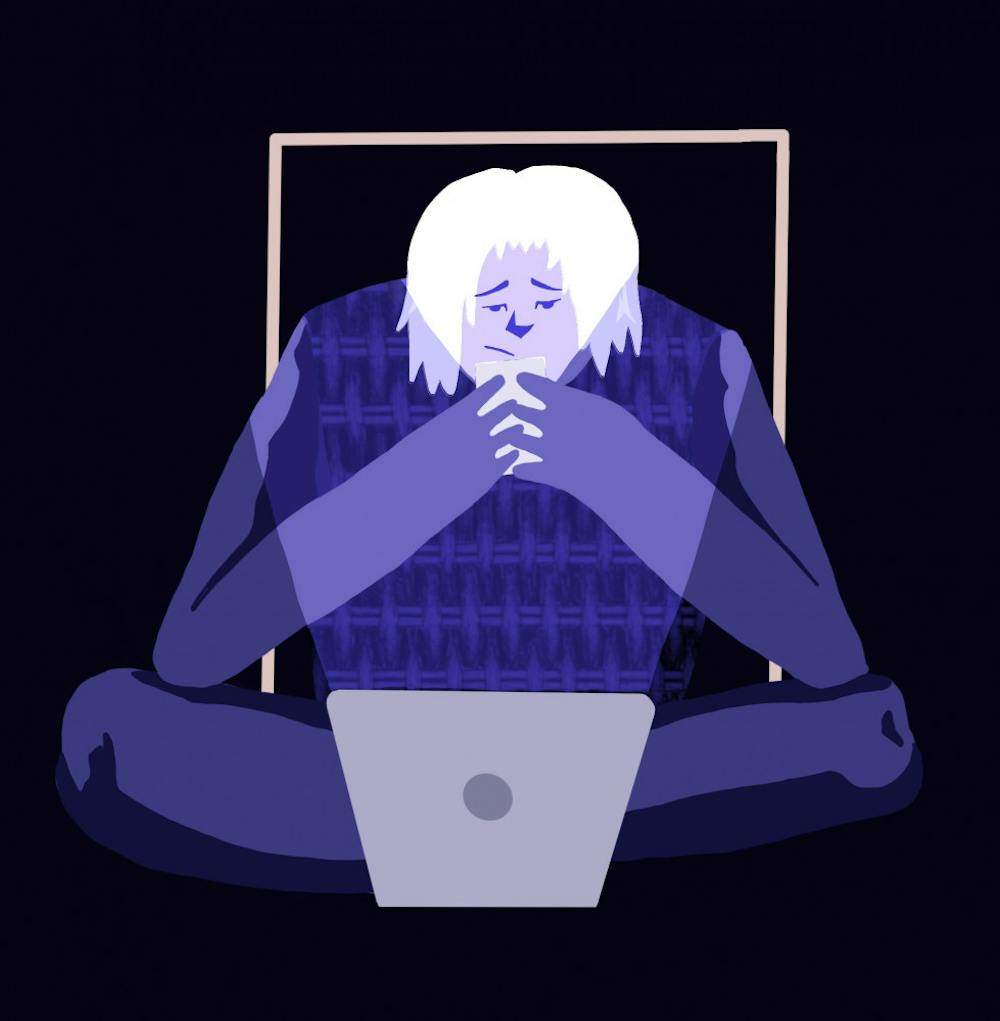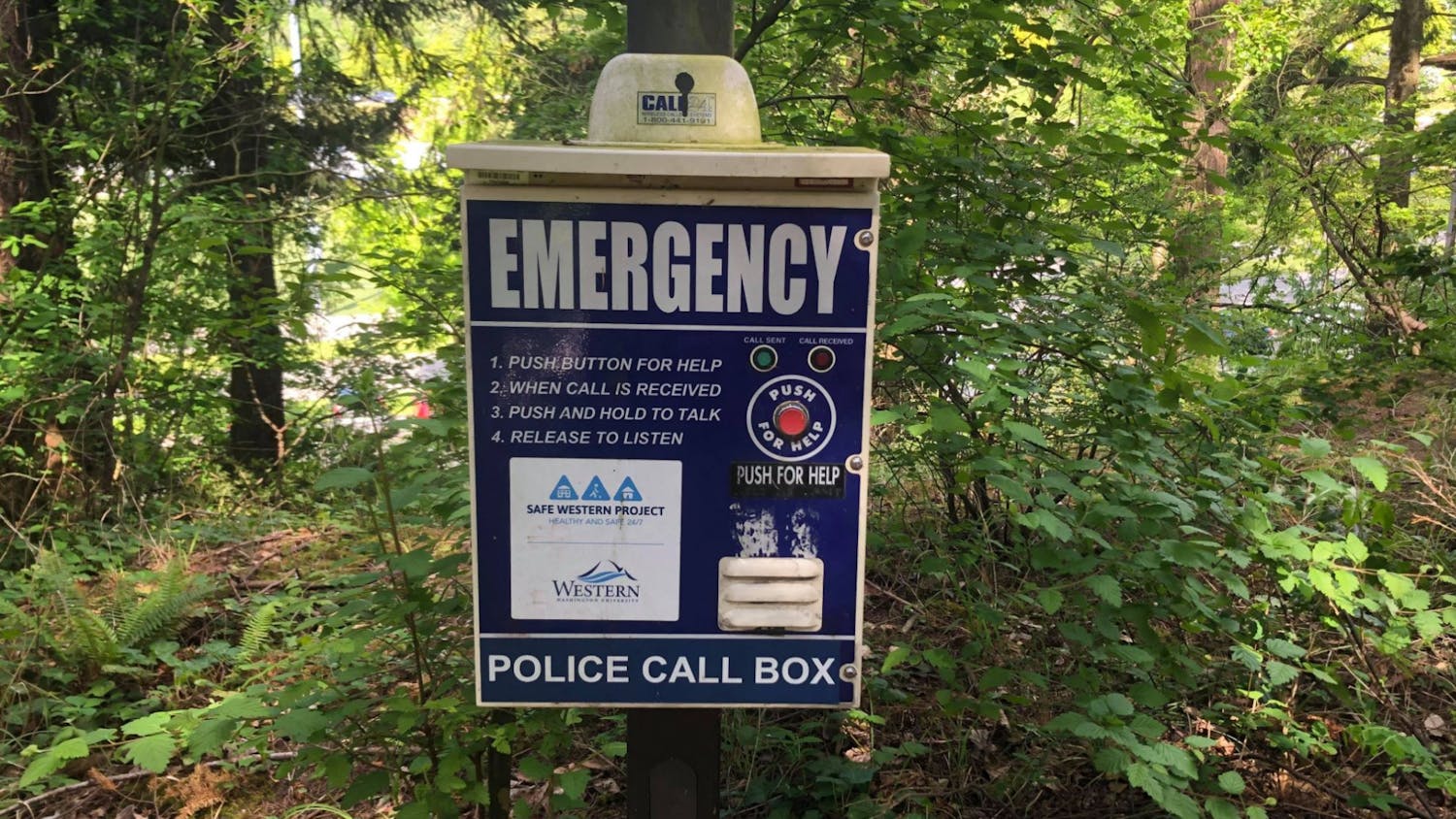Content Warning: This article contains language that may be triggering or traumatizing to some readers. CW: Eating disorders
In 2020, scrolling through TikTok became something like a minefield for Ally Duvall.
Duvall, who has been in recovery from an eating disorder since 2017, found that during the pandemic, the app had become inundated with content about dieting and avoiding gaining the “quarantine 15,” a term used to label weight gained during isolation.
“There were so many times where people would come up that were doing weight loss routines or trying out new diets,” Duvall said. “I would skip them, or I would say, ‘don’t show me more of this.’ And I swear, something in the algorithm was like, ‘show them more of this.’”
As social lives, work and school transitioned to a virtual space, it became easier to engage in comparison and experience negative body image, said Anna Ciao, founder of the Eating and Body Image research lab at Western Washington University.
Consumption and exposure to diet and weight-loss related content can increase the risk that someone will develop or return to disordered eating habits. Ciao described the expectation of people to use periods of isolation to lose weight or practice dieting as tragic.
“We are experiencing a worldwide tragedy,” Ciao said. “Making our bodies more appealing to other people should not be our focus.”
(Scientists are now beginning research on the effects of COVID-19 on people with eating disorders. Read more here.)
Amee Severson, a registered dietician at Prosper Nutrition and Wellness in Bellingham, said that many people who transitioned into eating disorder recovery during the past year have experienced shame and skepticism from others.
“Recovery often means body changes,” Severson said. “When it’s associated with quarantine, it’s like, ‘Oh, well what did you do wrong during quarantine?’”
In addition to the difficulty that those in recovery have experienced in the past year, Severson mentioned that they have seen an increase in disordered eating behaviors, which are different from diagnosable eating disorders like binge eating disorder and anorexia.
“Disordered eating is less clinical, less diagnosable,” Severson said. “But I would say that there are a ton more cases of that, as well.”
The surge of weight-loss trends and diet culture are not the only factors that have allowed the pandemic to increase the risk of disordered eating. According to Ciao, isolation, fear of the virus and the time spent at home have contributed to a major shift in many people’s relationship to food.
“The increase in stress and anxiety during the pandemic is for some people leading to a hyper-focus on food,” Ciao said. “We’re home more, we’re around our own food more, so eating habits are really different.”
Along the same lines, Ciao added that transitioning to a home-based work or learning environment has been taxing on many people’s self-image.
“A lot of students that I talk to who are doing a lot of Zoom talk about looking at themselves all day, and how unusual it is to have to interact with your own face,” Ciao said.
She noted that participating in virtual environments is like looking in the mirror for a long period of time, which can lead to a hyperfixation on one’s appearance.
Being stuck at home has also affected people’s ability to connect with supportive individuals like friends, family, therapists and nutritionists.
Duvall said she didn’t notice a change in her mental health right away once the pandemic began and stay-at-home orders went into effect.
“It wasn't until a couple months in, when I looked back and realized how much it was actually impacting me,” Duvall said. “I was really pulling away from people and it really impacted my ability to reach out.”
Eventually, Duvall was able to reconnect with the therapist and nutritionist that had helped her through her recovery. Duvall first realized she had an eating disorder in 2017, while taking an abnormal psychology class taught by Ciao.
“The second she started going over bulimia and binge eating disorder, I was like, ‘this is what I’ve been dealing with my entire life and I didn’t even know it was a thing,’” she said. “So I reached out to Dr. Ciao, and she was able to give me recommendations for therapists.”
Duvall considers herself lucky — she said that because of Ciao’s recommendation, she was able to find care right off the bat. That’s not the case for everyone, especially during the pandemic.
“I’ve heard horrible stories about people trying to seek treatment, and trying to get into places,” Duvall said. “It’s really difficult when there’s so many geographical and availability barriers to receiving treatment.”
During the past year, eating disorder specialists, clinics and centers all over the world have become overwhelmed by new clients, referrals and waitlist occupants, according to Ciao.
For people who live in smaller cities like Bellingham, it is difficult to find adequate care when the pool of specialists is so small and more intensive programs are located in larger metropolitan areas.
Prosper Nutrition and Wellness, the practice that Severson runs with two other counselors and dieticians, offers services like intake sessions, restaurant and grocery store visits, follow-up counseling and group therapy. But people who need inpatient clinical care in the Bellingham area are out of luck.
“They’re all in Seattle,” Severson said. “They’re few and far between, really expensive, and most treatment centers right now have a six to eight month waiting list to get in.”
Severson added that for people in Bellingham, the geographical and time constraints of living far from a larger city add to the barriers to recovery.
“It's not exactly easy to go to a three hour program in Seattle, three times a week if you live in Bellingham,” Severson said.
Severson said that even though access to care is generally difficult for people with eating disorders, the pandemic has given her the opportunity to expand the practice’s accessibility. The pandemic has allowed Severson to expand their client base beyond the Bellingham area through telehealth.
“Now I see people all over the state who just can’t find the care they need in their areas,” Severson said. “I can also see parents who have kids at home and can’t leave, and people who can only see me on their lunch breaks … which is kind of cool, and I hope it sticks around.”
According to Ciao, telehealth can give providers the opportunity to situate sessions in the home environment, where the client can be cared for in a comfortable environment and participate in common treatment activities like meal observations.
“For eating disorders, there’s the potential for [telehealth] to be transformational,” she said.
Ciao’s work in the Eating and Body Image research lab at Western has also given her some hope for the future. Though the pandemic has caused a resurgence in fat-phobic rhetoric, Ciao said she is encouraged by younger people’s more inclusive and accepting mindsets.
“When I talk with students, I have the most hope for the future,” Ciao said. “The idea of intersectionality and social justice activism, around all facets of identity including body size, it’s there. It needs to be amplified, but it’s there.”
A year out of her own recovery, Duvall was able to join the Eating and Body Image Research Lab’s team and help with Ciao’s work. Duvall worked primarily on the EVERYbody Project, which is a prevention program.
“It’s been a really wonderful experience taking what I experienced and seeing ways to prevent eating disorder symptoms.”






